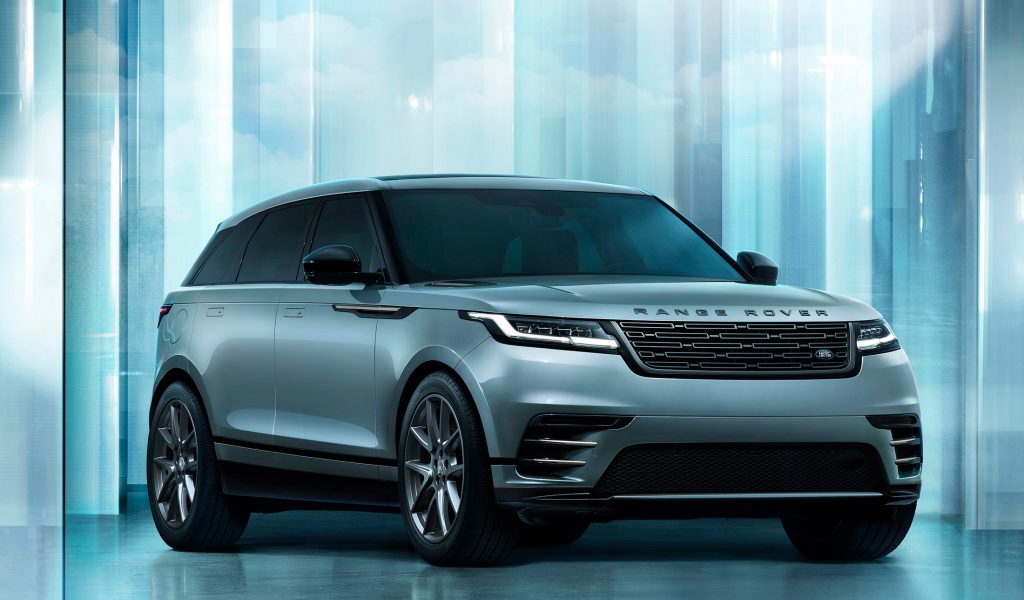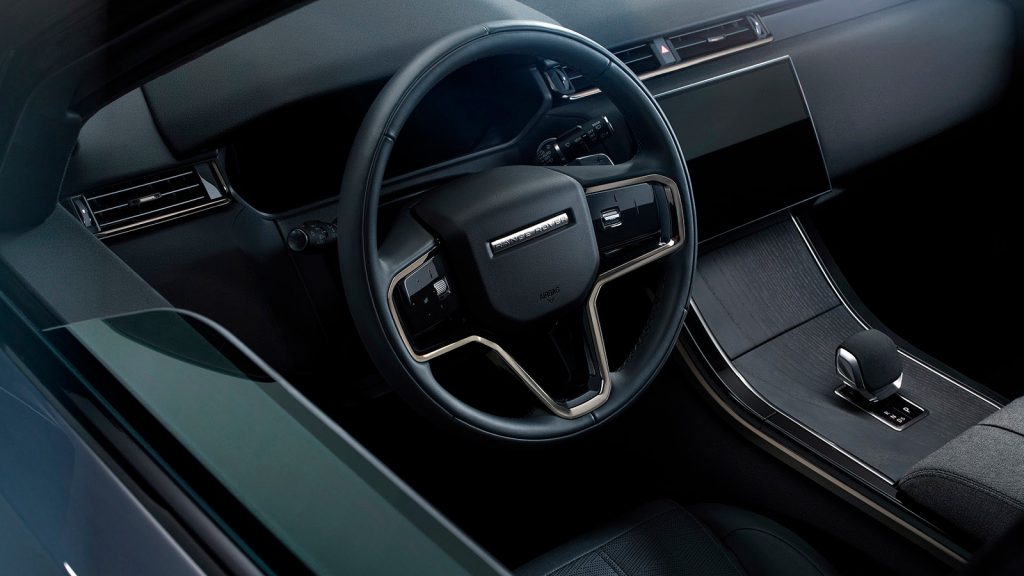Cargazing
By Derek Price
There’s no doubt the Range Rover Velar has style, but does it have substance?
That’s the question I asked myself while driving this eye-catching SUV from Britain. It’s one of the prettiest off-road-capable vehicles you can buy today with a posh, sleek, otherworldly body that looks like it could have time-traveled here from a decade in the future.
Visual updates for 2024 make it appear even more like a tailored, high-fashion driving accessory. Land Rover calls the new look a “reductionist design approach” that simplifies and distills styling elements, and I think the overall effect is stunning.
Changes to the headlights, grille and rear bumper for ’24 keep the Velar looking fresh and futuristic, a tough task on an SUV that already turned heads like few others.
Inside, the changes are even more dramatic.
Minimalism has been steadily creeping into car cabin designs for more than a decade, paralleling the popularity of mid-century modern design in American homes. Car designers apparently read Architectural Digest and want to make vehicle interiors feel as chic as John Legend’s living room.

The eye-catching Range Rover Velar gets noticeable style updates for 2024, including a simplified look for its grille, taillights, headlights and rear bumper.
The 2024 Velar is the first production car I’ve seen that takes minimalism to such extreme ends. There are literally, not figuratively, no buttons on the center of the cabin to interrupt the clean, flawless lines. Aside from a few tiny buttons by the driver’s left knee, everything on the dash is controlled from a floating touchscreen interface with curved glass.
That’s right, my fellow Luddites. We don’t get our volume knobs, temperature controls and radio dials with their own dedicated functions like in the good ol’ days.
Before you start whining, know that it doesn’t take long to adjust to the odd lack of switchgear on the dash. A conveniently placed roller on the steering wheel controls the volume level, and a brilliantly designed touchscreen interface lets you put all your favorite controls on the settings home screen for quick access.
Once you set up your favorites, it’s fast and easy to do things like, say, turn off the engine’s start-stop feature.
There’s no physical button for that, but the digital button is just one click away after you customize it.
Another nice tech feature is Land Rover’s Active Road Noise Cancellation system that works a lot like noise-canceling headphones. It makes the cabin sublimely quiet over the road.
Aside from Land Rover’s long-term reputation for dependability, which isn’t good, my only concern about the Velar is its base engine. A 2.0-liter turbocharged four-cylinder engine is enough to do the job with 247 horsepower in the base P250 version, but that’s not enough power to evoke Range Rover opulence.

The 2024 Velar’s cabin takes minimalism to an extreme level, eschewing all physical buttons in the center of the dash.
For that, you’ll need to opt for the P400 with its 3.0-liter turbo six-cylinder that comes with a mild hybrid system for better speed and fuel economy. It makes 395 horsepower and 405 pound-feet of torque, which is much more fitting for pretending you’re King Charles looking over your country estate.
If you’re looking for more substance, it can be found in the Velar’s magic-carpet suspension. It really lives up to the Range Rover reputation for unrivaled capability and unjostled comfort, especially with the P400’s Active
Dynamics system that changes the suspension response based on what the driver selects.
After a week of evaluating the latest Range Rover Velar, I found the answer to my initial question.
For style, the base P250 does a great job delivering moon-rover looks.
For substance, the Velar P400 delivers a lot more power, tech and comfort for about $9,000 more than the base version. It lives up to the Range Rover reputation.
Pricing for the Range Rover Velar starts at $61,500 and tops out at $84,795 for the P400 Dynamic HSE grade.
That compares to a starting price of $51,075 for the smaller Range Rover Evoque, $83,600 for the larger Range Rover Sport, and $107,400 for the full-size, full-bore Range Rover.
At A Glance
What was tested? 2024 Range Rover Velar Dynamic SE ($70,600). Options: Cold climate pack (41,1075), 21-inch wheels ($2,600), head-up display ($1,000), premium paint ($950), black contrast roof ($800), black exterior pack ($750), ash veneer ($460), wheel protection pack ($220), emergency pack ($75), handover pack ($28). Price as tested (including $1,275 destination charge): $79,933
Wheelbase: 113.1 in.
Length: 188.9 in.
Width: 84.5 in.
Height: 66.1 in.
Engine: 3.0-liter turbocharged 6 cylinder (395 hp, 405 ft. lbs.)
Transmission: Eight-speed automatic
Fuel economy: 19 city, 25 highway
RATINGS
Style: 10
Performance: 8
Price: 6
Handling: 7
Ride: 9
Comfort: 9
Quality: 7
Overall: 8
Why buy it?
It’s an exercise in high style and design sophistication. Changes for 2024 make it look stunning inside and out, and higher-end trims live up to the Range Rover reputation for capability, comfort and opulence.
